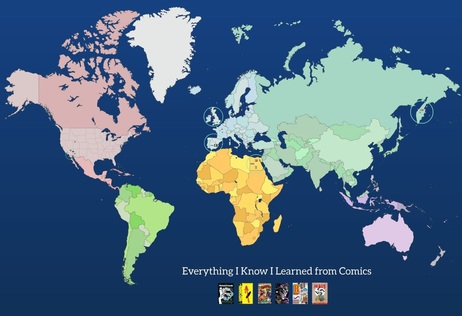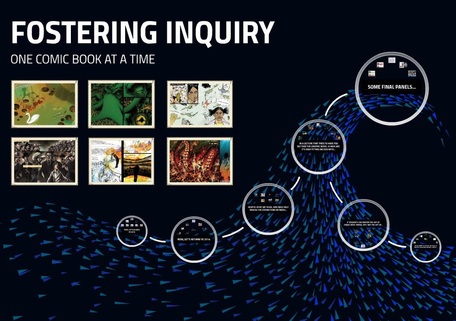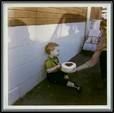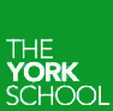WHY THIS SITE?
I was inspired to launch Comics in Education after the 2014 Reading for the Love of It conference at the Sheraton Centre in Toronto. I received so many wonderful inquiries from teachers that I wanted to create a forum where K-12 educators could find what they needed and be inspired to share the great things they were doing with their students to further explore visual narrative in the classroom. Below are synopses of the two workshops I gave at the conference.

EVERYTHING I KNOW I LEARNED FROM COMICS
Everything I know I learned from comics. No really -- everything. Not surprisingly, then, this session examines visual narrative as a genre worthy of study -- not simply as a means of giving elementary students material they find "easy" or "accessible" but as one whose form, content, and history can illuminate for kids different ways of accessing, thinking critically about, and making meaning of the world around them. Special focus will be given to teaching comics, graphic novels, and graphic poetry, and to the use of visual narrative with young learners. The session will look at award-winning titles and series that teachers can use with their students, including trade publications and those specifically designed for the junior classroom.
Everything I know I learned from comics. No really -- everything. Not surprisingly, then, this session examines visual narrative as a genre worthy of study -- not simply as a means of giving elementary students material they find "easy" or "accessible" but as one whose form, content, and history can illuminate for kids different ways of accessing, thinking critically about, and making meaning of the world around them. Special focus will be given to teaching comics, graphic novels, and graphic poetry, and to the use of visual narrative with young learners. The session will look at award-winning titles and series that teachers can use with their students, including trade publications and those specifically designed for the junior classroom.

FOSTERING INQUIRY ONE COMIC BOOK AT A TIME
This session examines how visual narrative—specifically comics and graphic novels—can be used to foster inquiry in young people, specifically in developing their global perspective. Visual narrative is transcultural, with a history that predates writing, and looking at its development shows us, at every turn, what the culture that produced it was thinking and feeling about itself and the world around it. The session will share ideas and activities that can be used to engage students in understanding the ongoing dialogue that comics and graphic novels have about how the world works and how (from their perspective) it should, while giving participants insight into a genre that has finally come into its own.
This session examines how visual narrative—specifically comics and graphic novels—can be used to foster inquiry in young people, specifically in developing their global perspective. Visual narrative is transcultural, with a history that predates writing, and looking at its development shows us, at every turn, what the culture that produced it was thinking and feeling about itself and the world around it. The session will share ideas and activities that can be used to engage students in understanding the ongoing dialogue that comics and graphic novels have about how the world works and how (from their perspective) it should, while giving participants insight into a genre that has finally come into its own.



